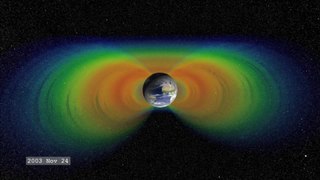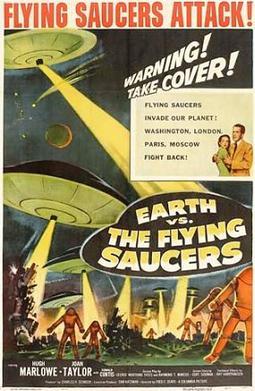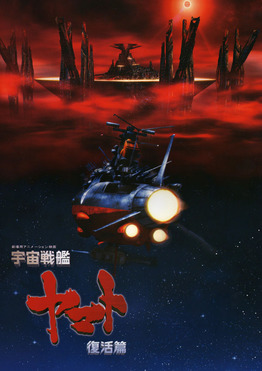
Fahrenheit 451 is a 1953 dystopian novel by American writer Ray Bradbury. It presents a future American society where books have been outlawed and "firemen" burn any that are found. The novel follows in the viewpoint of Guy Montag, a fireman who soon becomes disillusioned with his role of censoring literature and destroying knowledge, eventually quitting his job and committing himself to the preservation of literary and cultural writings.

Skylab was the United States' first space station, launched by NASA, occupied for about 24 weeks between May 1973 and February 1974. It was operated by three trios of astronaut crews: Skylab 2, Skylab 3, and Skylab 4. Operations included an orbital workshop, a solar observatory, Earth observation and hundreds of experiments. Skylab's orbit eventually decayed and it disintegrated in the atmosphere on July 11, 1979, scattering debris across the Indian Ocean and Western Australia.

The Van Allen radiation belt is a zone of energetic charged particles, most of which originate from the solar wind, that are captured by and held around a planet by that planet's magnetosphere. Earth has two such belts, and sometimes others may be temporarily created. The belts are named after James Van Allen, who published an article describing the belts in 1958.

Apocalyptic and post-apocalyptic fiction is a subgenre of science fiction in which the Earth's civilization is collapsing or has collapsed. The apocalypse event may be climatic, such as runaway climate change; astronomical, an impact event; destructive, nuclear holocaust or resource depletion; medical, a pandemic, whether natural or human-caused; end time, such as the Last Judgment, Second Coming or Ragnarök; or any other scenario in which the outcome is apocalyptic, such as a zombie apocalypse, AI takeover, technological singularity, dysgenics or alien invasion.

Kryptonians are a fictional extraterrestrial race within the DC Comics universe that originated on the planet Krypton. The term originated from the stories of DC Comics superhero, Superman. The stories also use "Kryptonian" as an adjective to refer to anything created by or associated with the planet itself or the cultures that existed on it.

Fahrenheit 9/11 is a 2004 American documentary film directed and written by, and starring filmmaker, director, political commentator and activist Michael Moore. The subjects of the film are the presidency of George W. Bush, the Iraq War, and the media's coverage of the war. In the film, Moore states that American corporate media were cheerleaders for the 2003 invasion of Iraq, and did not provide an accurate or objective analysis of the rationale for the war and the resulting casualties there.

Godzilla vs. Destoroyah is a 1995 Japanese kaiju film directed by Takao Okawara, with special effects by Kōichi Kawakita. Distributed by Toho and produced under their subsidiary Toho Pictures, it is the 22nd installment in the Godzilla franchise, and is the seventh and final film in the franchise's Heisei period. The film features the fictional monster characters Godzilla, Godzilla Junior and Destoroyah, and stars Takuro Tatsumi, Yōko Ishino, Yasufumi Hayashi, Sayaka Osawa, Megumi Odaka, Masahiro Takashima, Momoko Kōchi and Akira Nakao, with Kenpachiro Satsuma as Godzilla, Hurricane Ryu as Godzilla Junior, and Ryo Hariya as Destoroyah.

When Worlds Collide is a 1933 science fiction novel co-written by Edwin Balmer and Philip Wylie; they also co-authored the sequel After Worlds Collide (1934). It was first published as a six-part monthly serial in Blue Book magazine, illustrated by Joseph Franké.

Space weapons are weapons used in space warfare. They include weapons that can attack space systems in orbit, attack targets on the earth from space or disable missiles travelling through space. In the course of the militarisation of space, such weapons were developed mainly by the contesting superpowers during the Cold War, and some remain under development today. Space weapons are also a central theme in military science fiction and sci-fi video games.

Earth vs. the Flying Saucers is a 1956 American science fiction film from Columbia Pictures. It was produced by Charles H. Schneer, directed by Fred F. Sears, and stars Hugh Marlowe and Joan Taylor. The stop-motion animation special effects were created by Ray Harryhausen. The storyline was suggested by the bestselling 1953 non-fiction book Flying Saucers from Outer Space by Maj. Donald Keyhoe. The film was released as a double feature with The Werewolf.

WildC.A.T.S/Aliens was a one-shot comic book and intercompany crossover event, published by Wildstorm and Dark Horse Comics in 1998. The comic was written by Warren Ellis, pencilled by Chris Sprouse, with Kevin Nowlan inking and Laura Depuy as the colorist.

The Moon orbits Earth in the prograde direction and completes one revolution relative to the Vernal Equinox and the stars in about 27.32 days and one revolution relative to the Sun in about 29.53 days. Earth and the Moon orbit about their barycentre, which lies about 4,670 km from Earth's centre, forming a satellite system called the Earth–Moon system. On average, the distance to the Moon is about 384,400 km (238,900 mi) from Earth's centre, which corresponds to about 60 Earth radii or 1.282 light-seconds.

The Missile Defense Alarm System, or MIDAS, was a United States Air Force Air Defense Command system of 12 early-warning satellites that provided limited notice of Soviet intercontinental ballistic missile launches between 1960 and 1966. Originally intended to serve as a complete early-warning system working in conjunction with the Ballistic Missile Early Warning System, cost and reliability concerns limited the project to a research and development role. Three of the system's 12 launches ended in failure, and the remaining nine satellites provided crude infrared early-warning coverage of the Soviet Union until the project was replaced by the Defense Support Program. MiDAS represented one element of the United States's first generation of reconnaissance satellites that also included the Corona and SAMOS series. Though MIDAS failed in its primary role as a system of infrared early-warning satellites, it pioneered the technologies needed in successor systems.

Space Battleship Yamato: Resurrection is a 2009 Japanese animated science fiction action film, and the first part of a planned series of films which are the latest addition to the Space Battleship Yamato saga. Resurrection is set in the year 2220, 21 years after the first Yamato story and 17 years after the story of the last film, Final Yamato. A wandering black hole is approaching the Solar System, and will surely destroy all life on Earth. The decision has been made to evacuate Earth's entire population. The planet to which Earth's population is being moved is called Amare, ruled by Queen Iriya, some 27,000 light years away in the Sairam star system. When the film opens, that task is already under way. The Yamato had been destroyed in 2203.

Kepler-20e is an exoplanet orbiting Kepler-20. The planet is notable as it is the first planet with a smaller radius than Earth found orbiting a Sun-like star. The planet is second-closest to the star after Kepler-20b, and at 1,040 K, it is far too hot to have liquid water on its surface. Along with the other four planets in the system, Kepler-20e was announced on 20 December 2011.

Death's End is a science fiction novel by the Chinese writer Liu Cixin. It is the third novel in the trilogy titled Remembrance of Earth's Past, following the Hugo Award-winning novel The Three-Body Problem and its sequel, The Dark Forest. The original Chinese version was published in 2010. Ken Liu translated the English edition in 2016. It was a finalist for the 2017 Hugo Award for Best Novel and winner of the 2017 Locus Award for Best Science Fiction Novel.

Fahrenheit 11/9 is a 2018 American documentary by filmmaker Michael Moore about the 2016 United States presidential election and presidency of Donald Trump up to the time of the film's release. The film is a follow-up to Moore's Fahrenheit 9/11 (2004), a documentary about the presidency of George W. Bush. The film had its world premiere on September 6, 2018, at the 2018 Toronto International Film Festival, and was released in the United States on September 21, 2018, by Briarcliff Entertainment.
Brain Wave is a supervillain appearing in the DC Comics Universe, a recurring foe of the Justice Society of America and a founding member of the Injustice Society; he is also the father of the superhero Brainwave.
















